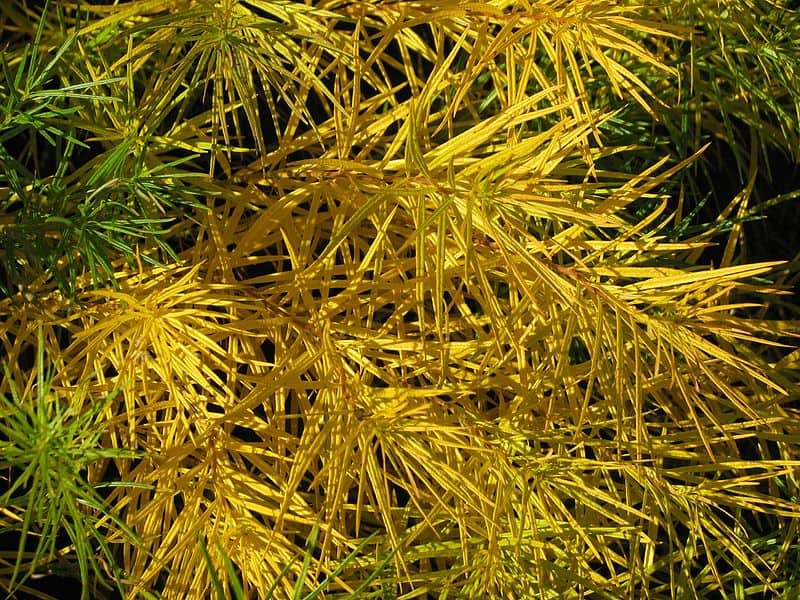Native Plants in Profile: Amsonia hubrichtii a plant for all seasons.
Amsonia hubrichtii is a northeastern native that thrives in poor soils and full sun, making the thread-leaf bluestar a top five native perennial that thrives in the coastal or Atlantic region of the Eastern states.
Common Name: Hubricht’s Bluestar or Eastern Thread-Leaf Bluestar
Plant Family: Apocynaceae
Pronunciation: am-SOH-nee-uh hub-RICK-tee-eye
Amsonia hubrichtii, commonly known as Hubricht’s Bluestar, is a perennial plant native to the United States. It is known for its delicate, feathery foliage and clusters of small, star-shaped pale blue flowers that bloom in late spring. The plant reaches a height of about 2-3 feet (60-90 cm) and forms a graceful mound of foliage, which turns a striking golden yellow to terracotta in the fall.


Care Instructions:
1. Sunlight: Plant Amsonia hubrichtii in a location that receives full sun to partial shade. It can tolerate some shade but flowers are best in full sun.
2. Soil: This plant prefers alkaline (6-7 ph) well-drained soil and thrives in poor free-draining soils. Ensure that the soil is not overly wet or prone to waterlogging.
3. Watering: Provide regular watering during the plant’s establishment period. Once established, it is drought-tolerant and requires minimal watering.
4. Pruning: Amsonia hubrichtii generally requires minimal pruning. Dry stems can easily be removed in early spring before new growth appears. Leaving stems between 12″ and 18″ will provide nesting sites for pollinators.
5. Companion Native Plants: Consider planting Amsonia hubrichtii alongside other native species that thrive in similar conditions, such as Echinacea (Coneflowers), Asclepias tuberosa (Butterfly Weed), Baptisia (False Indigo), and Rudbeckia (Black-eyed Susan).
6. Pests and Diseases: Amsonia hubrichtii is generally resistant to pests and diseases. However, keep an eye out for aphids or spider mites, which can occasionally infest the plant. Promptly address any pest issues with organic pest control methods if necessary.
Plant Design Options: Amsonia hubrichtii can be a versatile addition to various garden designs:
– Use it in perennial borders or mixed flower beds for its attractive foliage and delicate blue flowers.
– Plant it in mass groupings for a stunning visual impact.
– Incorporate it into a pollinator garden to attract bees and butterflies.
– Combine it with ornamental grasses or other perennials with contrasting colors and textures for an eye-catching display.
History and Similar Species:
Amsonia hubrichtii was discovered by Leslie Hubricht, an American botanist, in the 1940s. It is a native plant to the Ouachita Mountains region in Arkansas and Oklahoma.
Other similar species within the Amsonia genus include Amsonia tabernaemontana (Eastern Bluestar) and Amsonia ciliata (Fringed Bluestar). These species share similar characteristics and cultural requirements, making them suitable alternatives or complementary plants in a garden setting.
1. Amsonia tabernaemontana (Eastern Bluestar) – Native to eastern and central North America.
– Cultivars: ‘Blue Ice,’ ‘Storm Cloud,’ ‘Butterscotch’
2. Amsonia ciliata (Fringed Bluestar) – Native to the central and southeastern United States.
– Cultivars: ‘Georgia Pancake,’ ‘Filifera,’ ‘Halfway to Arkansas’
3. Amsonia hubrichtii (Arkansas Bluestar) – Native to Arkansas and Oklahoma in the United States.
4. Amsonia illustris (Ozark Bluestar) – Native to the Ozark Mountains in Arkansas and Missouri.
5. Amsonia rigida (Stiff Bluestar) – Native to the southeastern United States.
6. Amsonia tabernaemontana var. salicifolia (Willowleaf Bluestar) – Native to the southeastern United States.


